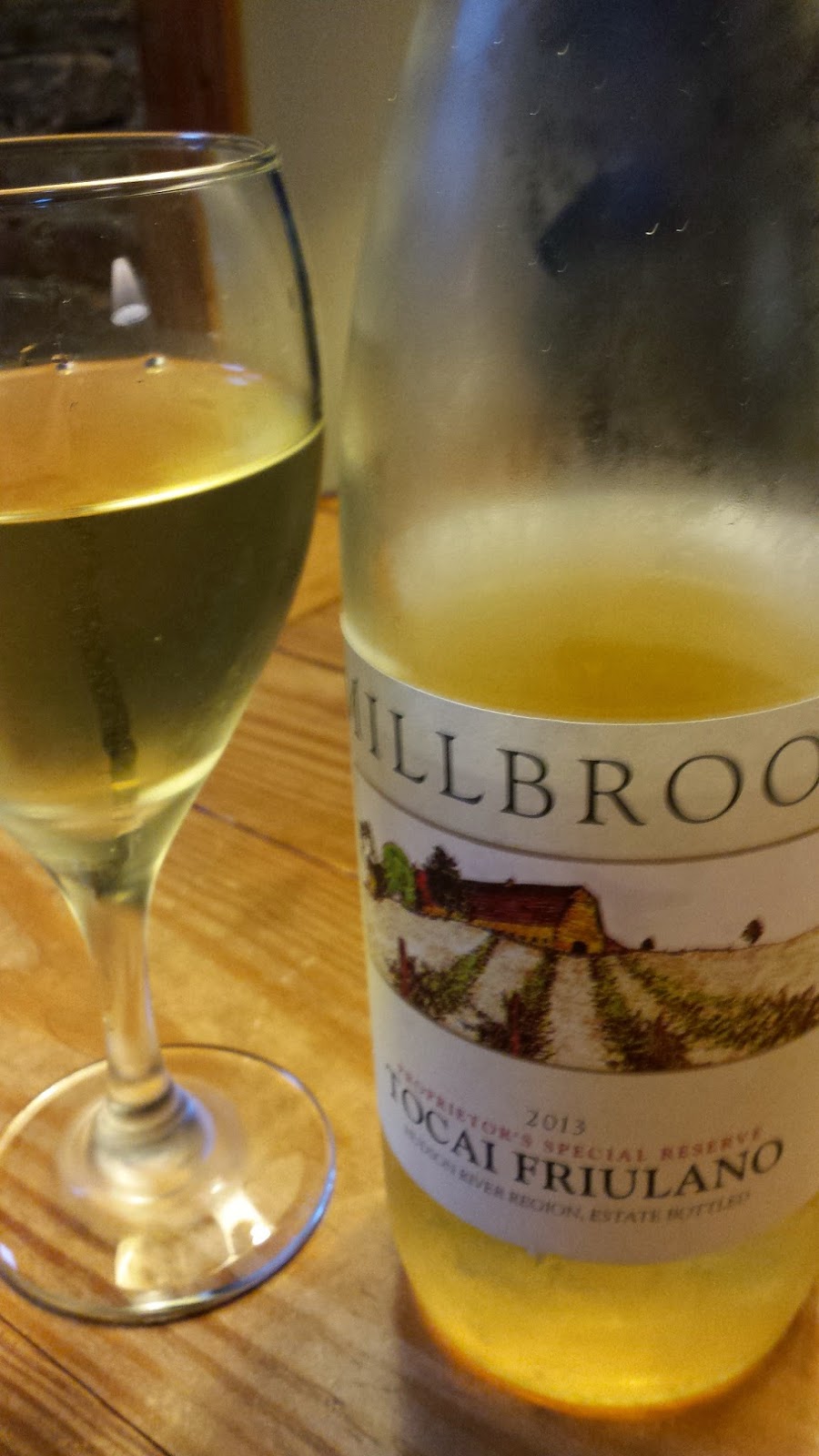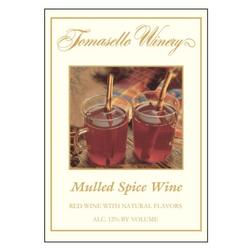 For the month of August, #WineStudio featured wines from the Hudson River Region AVA - the oldest continually-productive wine region in the United States. The first vines planted in the Hudson Valley occurred in 1677 in Ulster County (New Paltz) and it hosts the oldest continually operating winery in the country: Brotherhood America's Oldest Winery, originally established as Jacques Brothers’ Winery in 1837 to make sacramental wines. The earliest-planted continuously-used vineyard, going back to 1845, was planted by William Cornell in Ulster County. That vineyard is today part of Benmarl Winery & Vineyard, in Marlboro. Interestingly the Hudson River is a tidal estuary meaning the river flows in both directions. The growing season is short in the Hudson Valley (180 to 195 days). "By comparison, Long Island’s season lasts from 215 to 230 days, while the Niagara Escarpment enjoys 205 days, and the Finger Lakes AVA has 190 to 205 growing days." In order for a winery to place a Hudson River Region label on their wine, then 85% of grapes used were grown in the AVA. And finally, the Hudson Valley Wine and Grape Association has agreed on a benchmark white: Seyval Blanc.
For the month of August, #WineStudio featured wines from the Hudson River Region AVA - the oldest continually-productive wine region in the United States. The first vines planted in the Hudson Valley occurred in 1677 in Ulster County (New Paltz) and it hosts the oldest continually operating winery in the country: Brotherhood America's Oldest Winery, originally established as Jacques Brothers’ Winery in 1837 to make sacramental wines. The earliest-planted continuously-used vineyard, going back to 1845, was planted by William Cornell in Ulster County. That vineyard is today part of Benmarl Winery & Vineyard, in Marlboro. Interestingly the Hudson River is a tidal estuary meaning the river flows in both directions. The growing season is short in the Hudson Valley (180 to 195 days). "By comparison, Long Island’s season lasts from 215 to 230 days, while the Niagara Escarpment enjoys 205 days, and the Finger Lakes AVA has 190 to 205 growing days." In order for a winery to place a Hudson River Region label on their wine, then 85% of grapes used were grown in the AVA. And finally, the Hudson Valley Wine and Grape Association has agreed on a benchmark white: Seyval Blanc.Yet, there was no Seyval Blanc in the wines we tasted. Instead, we received the Whitecliff Vineyard & Winery 2013 Estate Bottled 'White Rose', the Brotherhood Winery NV “B” Sparkling Wine 100% New York Estate Bottled Chardonnay, the Millbrook Vineyards and Winery 2013 Tocai Friulano Proprietor’s Special Reserve Estate Bottled, and the Millbrook Vineyards and Winery 2012 Cabernet Franc Proprietor’s Special Reserve Estate Bottled.
 Whitecliff Vineyard & Winery is located on the west of the Hudson River (near New Paltz)opposite the Shawangunk Mountain chain. The winery was established in 1979 and currently the estate is one of the largest vineyards in the Hudson Valley, with over 20 varieties of grapes planted. Two of these are Traminette and Gewurztraminer and proprietor Michael Migliore like the idea of a "father/son blend" since Traminette is a Gewurztraminer hybrid. Thus, the 2013 Estate Bottled 'White Rose' 75% Traminette 25% Gewurztraminer ($18) results from a field blend, where the grapes from both varieties are picked together and co-fermented. The wine, named for the climbing vine on the cliff behind the vineyard, comes in at 12% ABV and .75 RS. The wine starts with plenty of aromatics, lychee and honey, followed by a mouthful of citrus and melon flavors, finishing with refreshing acids and a bit of white pepper. Very nice.
Whitecliff Vineyard & Winery is located on the west of the Hudson River (near New Paltz)opposite the Shawangunk Mountain chain. The winery was established in 1979 and currently the estate is one of the largest vineyards in the Hudson Valley, with over 20 varieties of grapes planted. Two of these are Traminette and Gewurztraminer and proprietor Michael Migliore like the idea of a "father/son blend" since Traminette is a Gewurztraminer hybrid. Thus, the 2013 Estate Bottled 'White Rose' 75% Traminette 25% Gewurztraminer ($18) results from a field blend, where the grapes from both varieties are picked together and co-fermented. The wine, named for the climbing vine on the cliff behind the vineyard, comes in at 12% ABV and .75 RS. The wine starts with plenty of aromatics, lychee and honey, followed by a mouthful of citrus and melon flavors, finishing with refreshing acids and a bit of white pepper. Very nice.  As previously stated Brotherhood America's Oldest Winery originally established as Jacques Brothers’ Winery in 1837 and is also on the New York State Register of Historic Places. The winery is currently owned by Cesar Baeza, who had been a young winemaker, then came back as owner/partner. Baeza purchased the property in 1987, but a near fatal fire almost closed the winery permanently. With a new partnership with two winemaking families from Chile (the Castro and Chadwick families), much needed capital was injected for a complete restoration and renovation.Yet, visitors can still walk through the original cellars built by Jean Jacques over 175 years ago.
As previously stated Brotherhood America's Oldest Winery originally established as Jacques Brothers’ Winery in 1837 and is also on the New York State Register of Historic Places. The winery is currently owned by Cesar Baeza, who had been a young winemaker, then came back as owner/partner. Baeza purchased the property in 1987, but a near fatal fire almost closed the winery permanently. With a new partnership with two winemaking families from Chile (the Castro and Chadwick families), much needed capital was injected for a complete restoration and renovation.Yet, visitors can still walk through the original cellars built by Jean Jacques over 175 years ago. For our #winestudio session we were sent the Brotherhood Winery NV “B” Sparkling Wine 100% New York Estate Bottled Chardonnay ($11.99). As in the name, the grapes were grown within the Empire state and the sparkling aspect was generated using the Charmat method. The aroma and flavor resemble bruised pears co-mingling with yeasty green apples. And the tail finishes with nice acidity. A pretty decent value at $12.
The History of Brotherhood Winery
In 1810, a French Huguenot emigre named Jean Jaques purchased land in New York’s bucolic Hudson Valley and began planting grapes. By 1837, Mr. Jaques needed more land, so he purchased a plot in the quiet village of Washingtonville, NY, and planted another vineyard. By 1839, his first underground cellars were dug and Mr. Jaques fermented his first wine vintage. Those cellars, the oldest and largest in America, are still in use today at Brotherhood Winery.
The Jaques family made wine at the Washingtonville facility for almost 60 years, selling much of it to Jesse and Edward Emerson, two New York City wine merchants. The Emersons, Finger Lakes vinters themselves, understood the high quality of Mr. Jaques’ wine and used it to improve a blend of wine from an organization called The Brotherhood of New Life - an experiment in utopian communal living in the Hudson Valley. When the Emerson family took control of the Washingtonville winery, they renamed it Brotherhood, a name that it still proudly bears today.
The Emerson family operated Brotherhood until Prohibition. In 1921, Louis Farrell purchased the winery and its large stock of sacramental wine. He sold wine for religious ceremonies throughout Prohibition, which was finally repealed in 1933. It has been noted that the clergy population in the area grew substantially during this period.
Louis and his wife were the first to grasp the value of Brotherhood’s location, as the nearest winery to New York City. They began conducting tours of the winery, highlighting the now-enlarged underground cellars, the history of the facility and its picturesque site. In fact, the Farrell family initiated the very concept of wine tourism, hosting parties and events at the winery that drew hundreds of thousands of fans annually, and introduced the Brotherhood brand to generations of American drinkers.
 The final winery featured was Millbrook Vineyards & Winery, which was the first Hudson Valley winery to dedicate production exclusively to Vitis Vinifera grapes. Millbrook's founder John Dyson started growing grapes by planting an
experimental acre at his family farm in Millbrook in the 1970's. The first commercial vintage was made by winemaker John Graziano in 1984 and Graziano has been producing wines at Millbrook ever since. Millbrook is also in the cutting edge of labeling. Check out the back of the Cabernet Franc and the plethora of information available to consumers. You can thank GM David Bova for this.
The final winery featured was Millbrook Vineyards & Winery, which was the first Hudson Valley winery to dedicate production exclusively to Vitis Vinifera grapes. Millbrook's founder John Dyson started growing grapes by planting an
experimental acre at his family farm in Millbrook in the 1970's. The first commercial vintage was made by winemaker John Graziano in 1984 and Graziano has been producing wines at Millbrook ever since. Millbrook is also in the cutting edge of labeling. Check out the back of the Cabernet Franc and the plethora of information available to consumers. You can thank GM David Bova for this. 

Millbrook is also in the cutting edge of grape diversity. Since 1985 they have been producing a Tocai Friulano as Dyson evidently became very fond of the grape during his travels to Italy. Their 2013 Tocai Friulano Proprietor’s Special Reserve Estate Bottled ($20) is a star, bright acidic, and low ABV at 13%. Their 2012 Proprietors Special Reserve Cabernet Franc ($30) is also a solidly delicious wine filled with layers of red fruit, some pepper and tobacco, and nice acidity. It contains 20% Merlot and 5% Cabernet Sauvignon which may explain the fruit over green pepper dominance.
I'm really looking forward to visiting the Hudson Valley this fall. Who's with me?






